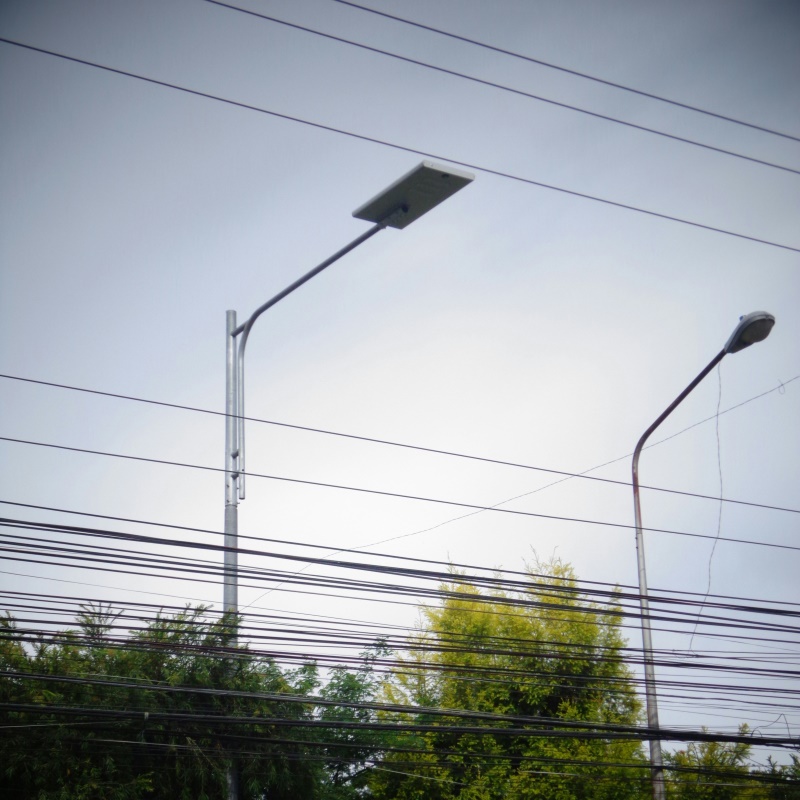Lighting in remote villages remains a challenge where traditional power grids are unreliable. Rural solar street light solutions deliver an affordable and sustainable answer. Unlike outdated systems with heavy wiring, these solar lighting solutions work independently, ensuring continuous operation even in isolated areas. With lead-free compliance and eco-friendly design, they reduce carbon impact while improving community safety.
For rural communities, the right solar street light can mean better mobility, longer working hours, and enhanced village security. Choosing the correct technology requires analyzing local needs, durability, and maintenance costs.
Explore how rural solar street light solutions solve specific challenges and discover the best approaches that support long-term sustainability.
Energy Insecurity in Remote Villages
Access to reliable electricity is rare in many rural areas. Diesel generators are costly, noisy, and harmful to the environment. Power cuts reduce productivity and create unsafe conditions at night.
Rural solar street light solutions provide a stable energy source. With advanced batteries and efficient LED fixtures, these systems guarantee light even during cloudy days. Off-grid operation also reduces dependency on failing grids.
High Maintenance of Traditional Systems
Conventional street lights need constant repairs. Wiring failures and transformer damage are common in rural terrain. For remote areas, skilled technicians are not always available.
Solar lighting solutions are modular, which simplifies upkeep. Integrated batteries, controllers, and LEDs minimize failure points. Some models come with remote monitoring, reducing the need for frequent inspections.
Safety Concerns in Dark Rural Roads
Unlit rural roads are dangerous. Poor visibility increases accidents and reduces the feeling of security. Women and children face higher risks when traveling at night.
By installing rural solar street light solutions, villages improve safety and reduce crime. Studies show that well-lit roads lower accident rates by up to 30%. Solar systems also support night markets, increasing economic activity.
Budget Constraints in Rural Development Projects
Rural communities often work with limited budgets. Installing a traditional power grid extension is expensive and sometimes impossible. Maintenance costs further add pressure.
Rural solar street light solutions lower lifetime expenses. With no fuel dependency and minimal wiring, they reduce upfront and ongoing costs. Many governments and NGOs support rural electrification, making projects even more affordable.
Harsh Environmental Conditions
Dust, heavy rains, and extreme temperatures affect rural infrastructure. Traditional street lights quickly degrade in such conditions. Frequent failures discourage long-term investments.
Modern solar lighting solutions use corrosion-resistant materials, waterproof enclosures, and smart heat management. These features extend lifespan to over 50,000 hours of illumination.
Technical Solutions for Rural Solar Street Light Systems
To address the above challenges, rural solar street light solutions integrate advanced technologies:
-
High-Efficiency Solar Panels
Panels with efficiency above 20% capture more energy, even in partial sunlight. For remote villages with cloudy seasons, this ensures reliable lighting. -
Lithium-Ion Batteries
Unlike lead-acid, lithium batteries offer longer life cycles and fast charging. They require minimal maintenance, reducing rural service costs. -
Smart Controllers
Controllers optimize charging and discharging cycles. They also allow dimming during low-traffic hours, saving energy. -
LED Lighting Fixtures
LEDs consume less power but provide higher brightness. They are durable and last longer than sodium or halogen lamps. -
Remote Monitoring
Some models support IoT-based monitoring. This allows technicians to diagnose faults without visiting the site, saving travel costs.
Data-Driven Insights
-
Solar LED lights cut electricity expenses by up to 70%.
-
Lithium battery-based systems last 2–3 times longer than lead-acid alternatives.
-
Villages with solar street lights reported 25% higher night-time economic activity.
Choosing the Right Rural Solar Street Light Solutions
When selecting a system, rural development planners should consider:
-
Lighting needs: Number of poles and brightness level.
-
Battery capacity: Should last at least 3–5 nights without sunlight.
-
Durability: Resistance to weather and dust.
-
Warranty and support: Reliable after-sales service is essential.
For cost-sensitive projects, hybrid models that combine grid backup with solar energy may be the best option.
Long-Term Benefits for Rural Communities
Adopting rural solar street light solution impacts more than energy savings. Benefits include:
-
Improved safety for villagers traveling at night.
-
Better education as schools extend study hours.
-
Boosted economy through night markets and shops.
-
Environmental protection by reducing carbon emissions.
With proper planning, villages can achieve both social and economic progress.
Conclusion
Remote communities deserve affordable and reliable lighting. Rural solar street light solutions are more than an energy upgrade; they represent a path to economic growth, safety, and sustainability. By choosing durable and efficient solar systems, rural planners empower communities with long-lasting benefits.
Bright Light specializes in solar street lamps and can customize more correct and suitable solutions to ensure that villages remain bright, safe and future-oriented.


